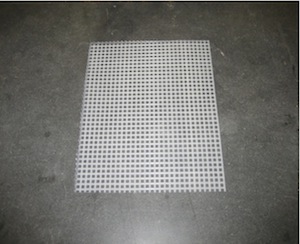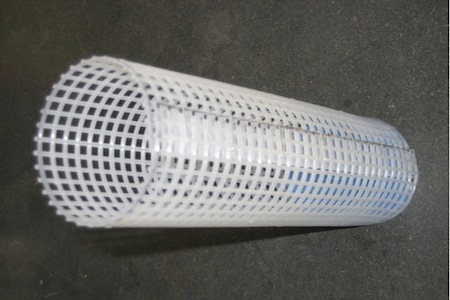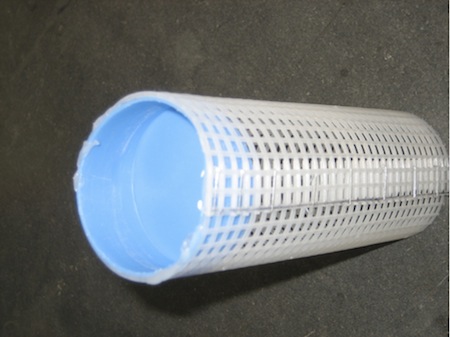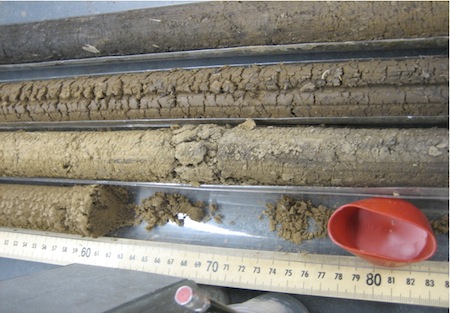Belowground Net Primary Production – Biofuel Cropping System Experiment
Active
In use from 2008-01-01
Abstract
The cropping systems of the GLBRC Biofuel Cropping System Experiment (BCSE) range from annual crops to perennial monoculture grasses and mixed communities. Different sampling methods are needed to measure belowground net primary production (BNPP) in these diverse systems. For annual crops, root biomass is sampled by excavating a single plant (Kellogg Biological Station, KBS) or a known soil area (Arlington, ARL). For perennial crops, root biomass is sampled from ~1 m deep cores and fine root production is estimated from in-growth cores buried at the beginning of the growing season. In general, root sampling occurs at peak biomass, which means physiological maturity for annuals and pre-senescence for perennials.
Protocol
Annual Crops
Annual Crop Root Production
In annual crops, plant excavations at the time of plant physiological maturity are used to index belowground net primary production (BNPP). At KBS, select one plant is from the quadrat area clipped for aboveground net primary production (ANPP), excavate and isolate the roots associated with that plant, place in labeled paper bag and transport to the laboratory. At Arlington, excavate all plants in a 1 m2 area, discard the aboveground biomass, isolate and collect the root and associated soil, and transport to the laboratory. At both sites, wash roots free of soil over a 2-mm sieve, oven dry at 60 °C for 48 h, and weigh.
Annual crop root production in the BCSE was measured 2008-2014.
Materials:
• Quadrat as per ANPP protocol
• Shovel
• Clippers
• Paper bags
Field Sampling:
At KBS:
1. Choose one plant within quadrat used for ANPP sampling and stem counts; one sample per sampling station.
2. Excavate all roots associated with that plant and place in pre-labeled paper bag.
3. Transport soil and roots to laboratory.
At Arlington:
1. Locate quadrat as per ANPP protocol.
2. Excavate all plant roots in a net 1 × 1 m area (quadrat size per ANPP protocol).
3. Clip and discard aboveground biomass and place the root ball into pre-labeled paper bag.
4. Transport soil and roots to the laboratory.
Lab Processing:
1. Wash roots free of soil over a 2-mm sieve.
2. If desired, separate tap root from fine roots.
3. Oven dry roots at 60 °C for 48 h.
4. Weigh and record.
Calculations:
At KBS, the roots associated with one plant are sampled. Use crop stem counts (number/m2) from ANPP sampling:
At Arlington, all plant roots in a 1 m2 area are excavated; no further calculations are needed.
Cover Crop Root Production
For treatments with cover crops (G2-G4), plant excavations at time of cover crop ANPP sampling are used to index cover crop root production, as above for row crops. First count the number of cover crop plants within the cover crop ANPP sampling quadrat and record. Then select one plant from within the quadrat, excavate the roots associated with that plant, and place in a labeled paper bag. In the lab, wash roots free of soil over a 2-mm sieve, oven dry at 60 °C for 48 h, and weigh. Cover crop root biomass is calculated as mass of roots of a single cover crop plant multiplied by the number of plants within that 1m2 quadrat.
Conducted only at KBS from 2013-2014.
Perennial Crops
Fine Root Production: Root Ingrowth Cores
Fine root production in perennial crops is estimated using root ingrowth cores (Bledsoe 1999, Fahey et al. 1999). Two 2-mm mesh cores, measuring 5 cm diameter × 13 cm long, containing native soil are installed at each sampling station in the perennial treatment plots at the beginning of the growing season (April/early May). The cores are placed vertically in the soil at random locations in the interstitial space between plants. To determine an approximate peak standing root biomass, collect one of the two cores at each sampling station at mid-season (mid-July) and the other at the end of the season (October). Remove the soil from the ingrowth core, tease out roots, and collect. Wash the roots free of soil over a 2-mm sieve, oven dry at 60 °C for 48 h, and weigh.
Root ingrowth cores measurements were made in all perennial treatments (G5-G10) 2009-2014.
Materials:
• Soil core hammer w/bit – Model 77557 (Forestry Suppliers – www.forestry-suppliers.com)
• Plastic soil core inserts (1 per core) – 77848 Butyrate Plastic Liner; 2″ × 6″L (Forestry Suppliers)
• Soil core insert caps (2 per core) – 77483 2" Polyethylene Liner Caps (Forestry Suppliers)
• 2 mm mesh cores (2 per station)
• Tape measure
• Compass
• Location data sheet
• 2 mm sieve with tray
• Aluminum foil or plastic wrap
• Clean sand
Making Root Ingrowth Cores:
1. Cut #5 mesh canvas (Blue Ribbon Crafts – www.blueribboncrafts.com) into 15 × 18 – cm rectangles (Fig. 1). Poke holes in the soil core insert cap for drainage (see above for cap info.). Note that each cap takes up 1 cm of the core so the effective core length in 13 cm.
2. Form a cylinder with the canvas, rolling along the long edge, and staple edges together with a 2-hole overlap (Fig. 2).
3. Apply a small bead of hot glue to soil core insert cap and place into pre-formed mesh core (Fig.3).




Field Deployment:
Determine and record location (distance and direction) for root ingrowth cores so they are not in the ANPP quadrat location.
At KBS:
1. Place plastic soil core sleeve in the hammer bit and remove soil core from determined location – mark location with a flag.
2. Remove core from insert – hand drill with bit works well.
3. Sieve soil over a 2 mm sieve and remove rocks and roots.
4. Add enough sand to the sieved soil to replace the roots and rocks. Cores are typically 75% native soil and 25% sand, but may be up to 1/3 sand and 2/3 soil if soil is particularly wet or rocky.
At Arlington:
1. Collect soil from fallow plot (untreated Plano silt loam, from West Madison Agricultural Research Station), sieve, and mix with sand to achieve a 75% soil, 25% sand ratio.
At both sites:
1. Fill ingrowth core with soil/sand mixture.
2. Install root ingrowth cores vertically in the soil and flush with soil surface at flagged location.
Standing Root Biomass: Deep Cores
Root (live plus dead) biomass is sampled in herbaceous perennial treatments (G5-G7, G9-G10) by taking deep cores to ~1 m at season’s end (typically November). Collect one set of 3 cores (each 7.6 cm diameter × 1 m long) from each replicate plot with cores positioned along a gradient of the dominant species from the center of the plant, adjacent to the plant, to interstitial between plants. Section cores into soil depth intervals of 0-10, 10-25, 25-50, and 50-100 cm. At Arlington, wash roots free of soil over a 2 mm sieve, oven dry at 60 °C for 48 h, and weigh. At KBS, air dry cores, then sieve over a 2 mm mesh scree to collect roots, was roots to remove any remaining soil, oven dry at 60 °C for 48 h, and weigh. Note that root biomass of deep cores is not scaled to plant density and should not be used as a direct measure of standing root biomass.
Deep core sampling of standing root biomass was conducted from 2009-2013.
Note: A 6-cm diameter x 1-m long core was used in 2009.
Materials:
• Truck with hydraulic soil corer
• 1 m long plastic soil core inserts (1 per location) – Giddings Machinery Co. (Arlington) or Geoprobe (KBS)
• Soil core insert caps (2 per location) – Giddings Machinery Co. (Arlington) or Geoprobe (KBS)
• Marker or label to mark plastic soil core insert
Field Sampling:
1. Choose coring location (1 location per plot). Find a representative part of the plot but one that minimizes disturbance from the truck.
2. At each coring location, remove three 1 m deep cores along a plant density gradient from the center of the dominant species in the treatment to the interstitial space: specifically one core at center of plant, one adjacent to plant (on the edge of) and one in the interstitial space (between plants).
3. Remove to lab or processing station. Place in refrigerator until processing occurs.
Lab Processing:
1. Split plastic soil core insert (Fig. 1).
2. Segment into designated soil intervals (eg., 0-10, 10-25, 25-50, and 50-100 cm).
3. Wash roots free of soil over a 2 mm sieve.
4. Separate into live and dead components, if desired.
5. Dry at 60 °C for 48 h.
6. Weigh and record.

References
Bledsoe, C. S., T. J. Fahey, F. P. Day, and R. W. Reuss. 1999. Measurement of static root parameters: biomass, length, and distribution in the soil profile. Pages 413-436 in G. P. Robertson, D. C. Coleman, C. S. Bledsoe, and P. Sollins, editors. Standard Soil Methods for Long-term Ecological Research. Oxford University Press, New York, New York, USA.
Fahey, T. J., C. S. Bledsoe, F. P. Day, R. W. Ruess, and A. J. M. Smucker. 1999. Fine root production and demography. Pages 437-455 in G. P. Robertson, D. C. Coleman, C. S. Bledsoe, and P. Sollins, editors. Standard Soil Methods for Long-term Ecological Research. Oxford University Press, New York, New York, USA.
Date modified: Tuesday, Oct 24 2023
Datatables
- Root Productivity (BNPP), Total carbon and Nitrogen - Annual Crops (G1-G4) (KBS085-001)
- Belowground Biomass - Perennial Crops (KBS085-003)
- Fine Root Productivity (BNPP) - Perennial Crops (G5-G10) (KBS085-002)
- Root Biomass in Deep Cores (GLBRC130-005)
Replaces Below Ground Net Primary Production- GLBRC Intensive Sites
Subsurface standing stock, 5-cm core was changed to 7.6-cm because we started using this in 2010. A note was added that a 6-cm core was used in 2009. A 5-cm core was never used.
March 2016: SSR added end date to protocol
24Apr2023: JS edited and reformatted